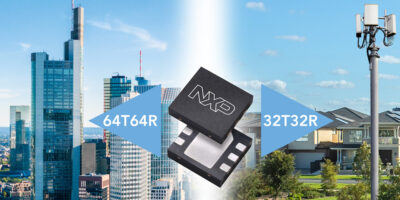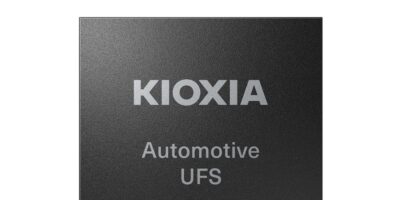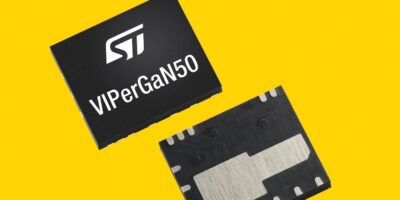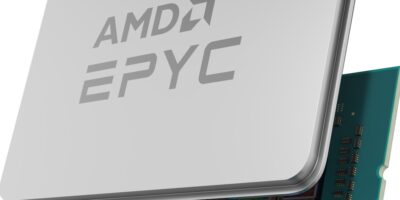Discrete RF transistors by NXP Semiconductors enable smaller, lighter weight 5G radios to facilitate deployment in urban and suburban areas. The 32T32R active antenna systems use proprietary GaN technology and join NXP’s discrete GaN power amplifiers for 64T64R radios, covering all cellular frequency bands from 2.3 to 4.0GHz. According to NXP, it now offers the largest RF GaN portfolio for massive multiple input, multiple output (massive MIMO) 5G radios.
Mobile network operators are adding 32T32R radios to increase massive MIMO coverage beyond dense urban areas. By combining 32 antennas instead of 64, coverage can be maintained more cost effectively, reasoned NXP, while maintaining the high-end 5G experience enabled by massive MIMO.
The latest RF power transistors deliver twice the power in the same package as NXP’s 64T64R devices, for a smaller and lighter overall 5G connectivity solution. The 32T32R devices are pin-compatible with the earlier generation of devices, for rapid scaling of 5G networks.
The GaN discrete devices are designed for 10W average power at the antenna, targeting 320W radio units, with up to 58 per cent of drain efficiency. The design includes driver and final-stage transistors as well as NXP’s RF GaN technology.
“As 5G deployments continue to expand globally, network operators need to extend their coverage while maintaining performance,” noted Jim Norling, vice president and general manager, High Power Solutions, Radio Power, NXP. “By offering twice the power in the same package size, NXP enables RF engineers to create base stations that are smaller, lighter and easier to deploy and conceal in urban and suburban areas.”
NXP offers a 5G portfolio from antenna to processor to accelerate 5G deployments for secure infrastructure, industrial, and automotive applications, including the Airfast RF power family and the Layerscape family of multi-core processors for wireless data links, fixed wireless access, and small cell devices.







